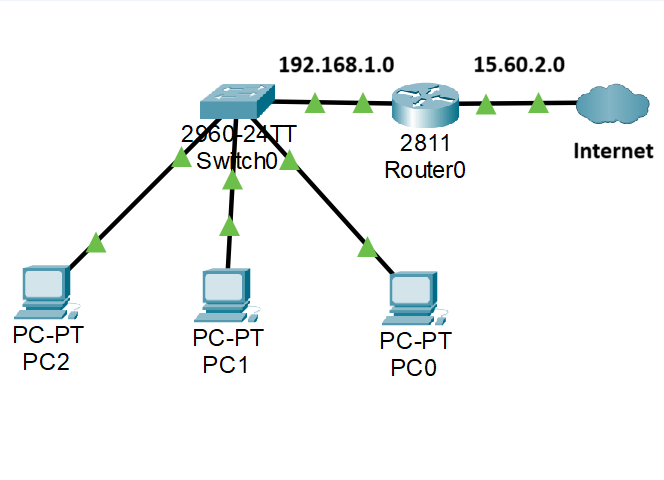Understanding the role and function of various network components is fundamental to designing, managing, and troubleshooting a network. Here’s a breakdown of key components commonly encountered in network infrastructure.
1.1 Explain the Role and Function of Network Components
Key Functions of a Router:
1.1.a Routers
Routers are devices that connect different networks and route data packets between them. They operate at Layer 3 (the Network layer) of the OSI model. Routers make decisions based on IP addresses, determining the best path for data to travel from the source to the destination across interconnected networks.
They play a crucial role in managing traffic, ensuring data reaches the correct endpoint, and often have additional features like PAT, which allows multiple devices on a local network to share a single public IP address.

1.1.b Layer 2 and Layer 3 Switches
Switches are devices that connect multiple devices within the same network, enabling communication between them.
Layer 2 Switches: These operate at the Data Link layer (Layer 2) of the OSI model. They use MAC addresses to forward data frames between devices within the same VLAN (Virtual Local Area Network). Layer 2 switches are essential for segmenting a network to reduce collisions and increase efficiency.
Layer 3 Switches: These operate at both the Data Link (Layer 2) and Network (Layer 3) layers. In addition to switching functions, they can perform routing between VLANs, effectively acting like a router within a switch. This is useful in large networks where multiple VLANs are used, providing both switching and routing capabilities in one device.

1.1.c Next-Generation Firewalls and IPS
Next-generation firewalls (NGFW) and Intrusion Prevention Systems (IPS) are critical for network security.
Next-Generation Firewalls (NGFW): Unlike traditional firewalls that only filter traffic based on port and protocol, NGFWs provide deeper inspection, including application awareness, integrated intrusion prevention, and the ability to block modern threats like advanced malware and application-layer attacks.
Intrusion Prevention Systems (IPS): IPS devices monitor network traffic for suspicious activities and automatically take actions, such as blocking or quarantining, to prevent potential attacks. IPS is often integrated into NGFWs, offering a comprehensive security solution.
1.1.d Access Points
Access Points (APs) provide wireless connectivity to devices within a network, typically within a local area such as an office, home, or campus. They operate primarily at Layer 2, managing wireless communication and bridging wireless devices to the wired network.
Modern APs support multiple wireless standards (like Wi-Fi 5 or Wi-Fi 6) and offer features like multiple SSIDs, VLAN tagging, and even some basic security features.

1.1.e Controllers
Controllers, specifically Wireless LAN Controllers (WLCs), manage multiple access points in a network. Instead of configuring each AP individually, network administrators can use a controller to manage all APs centrally.
Controllers enable easier management of large wireless networks, offering features like centralized configuration, firmware updates, load balancing, and seamless roaming for clients moving between APs.
1.1.f Endpoints
Endpoints are devices at the edge of the network where data communication ends, such as computers, smartphones, printers, and IoT devices. These devices are the primary users of network resources and can be either wired or wireless.
Endpoint security is crucial as these devices are often the target of malicious attacks, making them a critical component in overall network security.
1.1.g Servers
Servers are powerful computers that provide services, data, or applications to other devices (clients) on the network. They can host various services like web hosting, email, file storage, databases, and more.
Servers typically run on dedicated hardware or virtual machines and are central to a network’s operation, ensuring resources are available to users and other network devices.
1.1.h Power over Ethernet (PoE)
Power over Ethernet (PoE) is a technology that allows network cables to carry electrical power to devices like IP cameras, wireless access points, and VoIP phones. This eliminates the need for separate power supplies, simplifying installation and reducing wiring complexity.
PoE is particularly useful in locations where it’s difficult to provide a power source, such as ceilings or outdoor environments.
Summary
Understanding the role and function of network components like routers, switches, firewalls, access points, controllers, endpoints, servers, and PoE is essential for any network professional. Each component has a unique function, and together they form a comprehensive network infrastructure that enables communication, data exchange, and security across various environments.
Mastery of these components is foundational for anyone pursuing networking expertise.